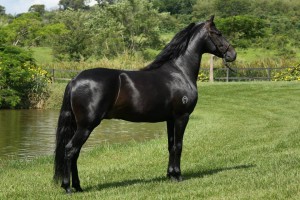Are you planning to breed your mare this year? How does one choose the perfect equine partner?
No matter if you are a one-time breeder or a veteran, the goal of every horse breeder is for the next generation to be superior to the preceding one. It’s a daunting challenge!!
Here are our checklists and guidelines for how we select that special stallion.
There are generally a few important areas to consider in evaluating a stallion for breeding that many articles reference:
- Conformation
- Performance Record
- Progeny
- Pedigree
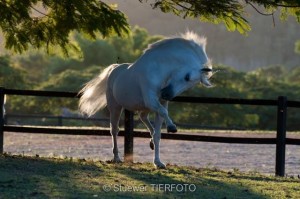
I add 2 additional criteria in my breeding program: Gait and Temperament. Temperament is sometimes not even considered, but is critically important. While all of the other criteria can be researched or be apparent, this one is not as obvious. We have boarded at stallion collection stations and have seen some stallions who, while beautiful, were very high-strung or displayed other temperament issues. Temperament is one of the main reasons I fell in love with the Mangalarga Marchador.
In all areas, you are looking to see if this stallion has the genetic material to pass on to your foal.
Do you notice that color is not on this list? You may or may not select that unique or flashy colored one, but it should be only after that stallion gets onto your short list of potentials.
Conformation – In Brazil, the ABCCMM inspects all breeding stock for conformation, gait and temperament before they become permanently registered and allowed to breed. We personally believe it is one of the reasons the quality in our Marchador breed is consistently high. But, then you add the passionate breeders, some of whom have been breeding Marchadors for generations! These breeders take these young approved stallions and pick the ones they consider the best. Then, these young Mangalarga Marchador stallions are tested on groups of 10-30 mares and the next year’s foal crop is evaluated. If their progeny are not of sufficient quality or if the stallion does not pass on his desired characteristics, that stallion may never breed again.
In some other breeds, the qualification process is similar. Some warmblood breeds do not officially approve a breeding stallion permanently until their offspring reach performance and evaluation age.
Performance Record – This is pretty self-explanatory. However, if the stallion is young or has not been shown, then you can look at the performance record of close relatives or progeny. They will share some of the same genetic material as the stallion you are considering. Depending on your reason for breeding, performance record may become the prime criteria for selecting your stallion.
While the Mangalarga Marchador is used in many disciplines, in Brazil, the MM Breed Shows are primarily to name a gait champion, a conformation champion and then combined to name an overall champion.
Progeny – For me, progeny is the most accurate measure of selecting a stallion for his genetics. If there is a sufficient number, it is easy to see what he passes on to his foals. If the foals are old enough, you can evaluate their conformation, their performance record and answer the question – are they better than the previous generation? Does this stallion pass on his extraordinary characteristics?

Evaluating his progeny will answer the question of whether or not the stallion is a genetic outlier – a great individual, but not typical of his family’s gene pool. It may also do just the opposite, show you that this fairly average performance horse only produced big-time winners.
When we bought our original Mangalarga Marchador stallion La Paz Jivago, it was based on his foal crop that we saw in Brazil. The next stallion who replaced him in Brazil had a better show record, but the foal crops were not as good as Jivago’s and the Brazilian breeder was soon searching again for a new herd stallion.
Pedigree – I am a bloodline fanatic; this is like reading a good book for me. Pay close attention to the parents and grandparents. Having a great named horse many generations back is interesting, but not relevant. A great, great grandfather won’t be a predictor of the genes this stallion carries. You can expand this and also look at close relatives like brothers and sisters. Are they all great? Do they carry the same characteristics? There, then is a strong gene pool that might be prepotent.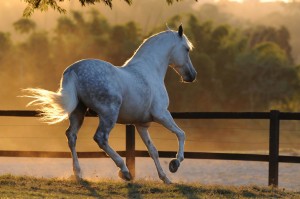
For breeds with a long history, certain traits are known to exist in certain bloodlines and if you can find that out, it will make your search easier too. Pedigree may become more important if there is not enough data in the other categories such as performance record or progeny, like when considering a younger stallion.
In the Marchador breed, the ELITE Books of the ABCCMM in Brazil were created for this purpose. These are registry books for a very small number of Marchador horses that were National Champions and then who also PRODUCED a number of National Champions. It is a great thing to have in your pedigree – but again, it is more relevant if they are parents or grandparents. While the ELITE books are great, they cannot be the sole source of determining quality. Many horses and bloodlines are not represented there. Some Mangalarga Marchador breeders never show their horses at all, or if they are far away, on the National stage. A huge bloodline, JB is under-represented in the book on a historical basis. Marcha picada classes did not exist within the ABCCMM National competitions until the mid-2000s, so many of these horses never had the option of achieving ELITE status.
Gait – In the Marchador breed, as well as other breeds, the selection of gait is important. There are 2 gaits in our Marchador breed: marcha batida and marcha picada. Breeders normally breed the kind of horse they personally love. Figuring out what type of gait you desire and also the characteristics of the gait that you love whether it be the quality of the gait (lift of the front legs, stride length, balance, athletic), or smoothness (regular beat, 3 feet on the ground more often, not too lateral or too diagonal)
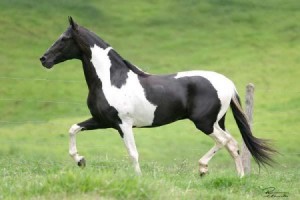
Breeding one gaited horse to another gaited horse does not always result in a better-gaited foal. If you have ridden a gaited horse that paces, you might understand. Pacing can often happen when the breeder allows the gait to become too lateral. Training can improve gait, but genetics set the stage for what you get to work with.
This year, there are new genetic gait studies and research looking for gait genes or DNA tests for gait. These are exciting times! Their research could be a huge help or even a breakthrough for gaited horse breeders.
Temperament
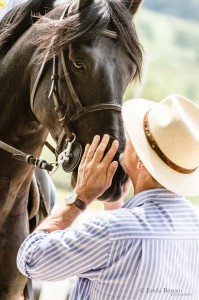
If it’s possible, be sure to ask about the temperament of the stallion and be as specific as you can on the characteristics that are important to you. How does the horse react to something new? How did he handle being started under saddle? What is his behavior with other horses? Does he ever show signs of aggression? What stories or examples can you give to prove his intelligence?
Rating on a scale of 1 to 10 is popular, but I can never tell if we are comparing apple to oranges. What if my definition of 5 is equivalent to your rating of an 8? The questions work better.
Picking the specific stallion to match your mare:
 From the small list of potential suitors, you can turn your attention to your mare.
From the small list of potential suitors, you can turn your attention to your mare.
Evaluate her strengths and weaknesses using the same criteria as you did the stallion. If you are not qualified enough to rate her conformation, then you can hire your vet or other knowledgeable horse expert to do it for you.
Some mare owners believe the stallion may solve all her faults. That is certainly never the case. You may have to face the hard truth that your loving mare should not be bred. If you want to have a foal, the mare may still be useful in producing a foal for you if you use her as a surrogate mare to carry an embryo.
If your mare does have areas to improve or that don’t match your taste, now you can go through your short list of preferred stallions and try to select the one that will complement your mare. Do you want a longer neck? Does she need more bone? Better quality of movement? Again, be as specific as possible to narrow down to her perfect match!
At this point, if there is a desired color as well, if all other things are equal, then go ahead and select for color. There are websites that can help predict the percentages of the color outcome of the foal. They can be more accurate if you can send in the DNA for the parents to do a color analysis.
Selection and Pricing
In this modern era with cooled semen and frozen semen shipment, there is no reason why you can’t absolutely breed to a great stallion, wherever he happens to be located.
Money is often mentioned as a main criterion for selecting a stallion. There may be equally good stallions in different price ranges so it is a consideration. But, if in fact, you are extremely restricted in your budget, it is again a red flag that should make you think about moving ahead. Breeding costs alone are often quite high and there is no guarantee that it will work the first time.
Pricing for stud fees and semen can be difficult to compare between stallions. Be sure to add up all of the costs and expenses that you, as the mare owner, are asked to pay. Often, the schedule of expenses is different between breeders.
Contact us for our spreadsheet of planning/estimating breeding costs!
Have fun in your search!
Future Foal “stands” six outstanding Marchador stallions from Brazil in 2015. They are on ice, frozen semen only. We have a few “do Summerwind” stud colts coming up for 2016.
- Arun de Maripa, black, marcha batida, bloodline – Favacho, Tabatinga, Abaiba
- Fole de Maripa, grey, marcha batida, bloodline – Favacho, Tabatinga, Abaiba
- La Paz Jivago, dunskin, marcha batida, bloodline – Favacho, Tabatinga
- Oma de Maripa, grey, marcha batida, bloodline – Abaiba, Herdade, Bela Cruz
- Talisma Kafe, black & white pinto, marcha picada, marcha de centro, bloodline – pure JB
- Ximoio de Maripa, grey, marcha batida, pure Abaiba

